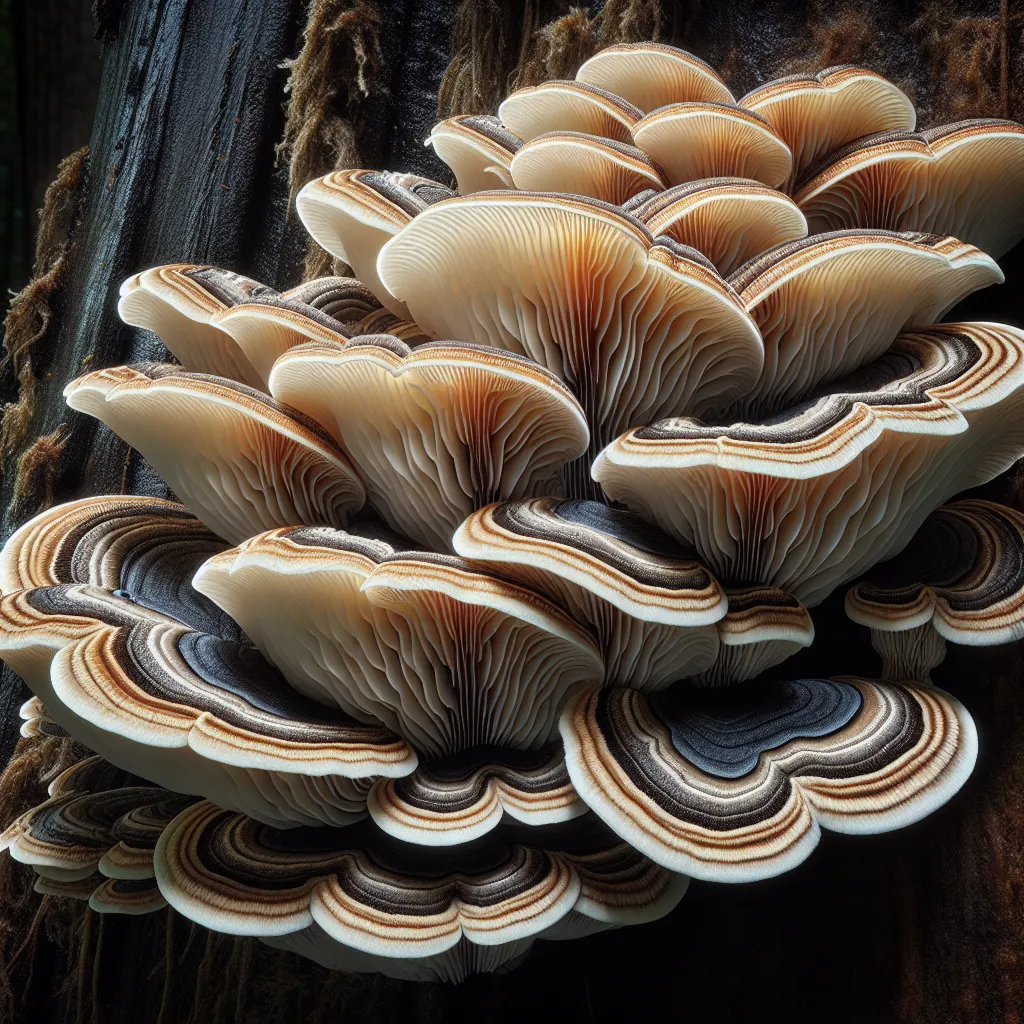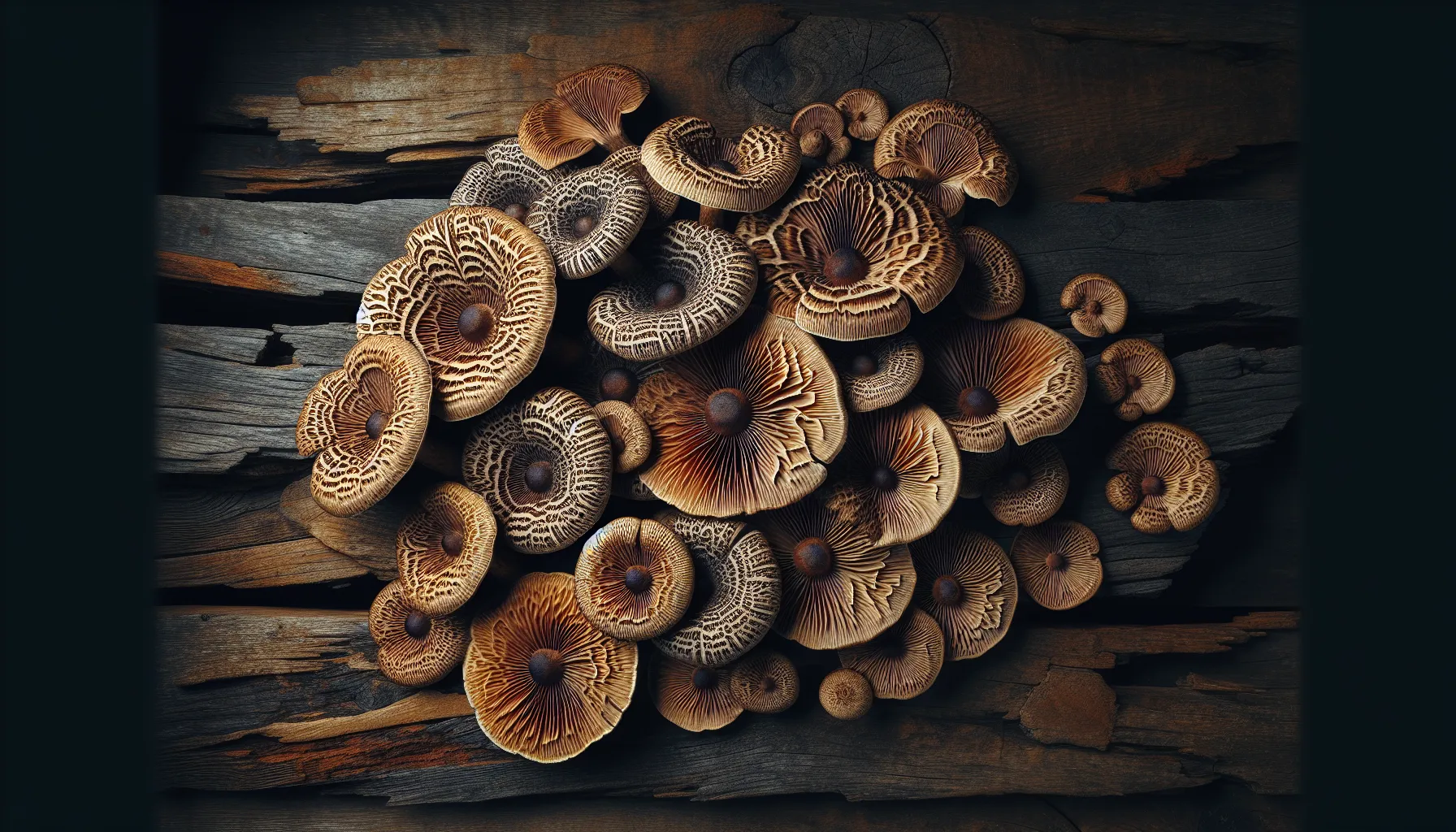Pheasant back mushrooms (known as Polyporus squamosus or Cerioporus squamosus) are a fascinating species of fungi that not only add a unique twist to culinary dishes but also boast an array of health benefits. These mushrooms are known for their distinctive appearance, which (vaguely) resembles the feathers of a pheasant when they are mature, hence the name. They grow on living or dead hardwood trees and play a significant role in forest ecosystems by aiding in the decomposition process. Beyond their environmental importance, pheasant back mushrooms are gaining attention for their nutritious value and potential medicinal properties.

Identification and Characteristics
Pheasant back mushrooms are a type of bracket fungus and can be identified by their brownish or yellowish caps with a scaly texture and a velvety black stem base. They grow in clusters that resemble shelves or tiers, sporting fanlike or funnel-shaped caps that can measure between 3 to 12 inches long. Underneath the cap, you’ll find a layer of angular pores, which is where the spores are released for reproduction. As they age, these mushrooms grow larger and their pores open up, changing color or darkening, with stems becoming woody.
Nutritional Value
The nutritional profile of pheasant back mushrooms is quite impressive. A 100-gram serving contains 17.14 grams of protein, 2.69 grams of fat, and 77.02 grams of carbohydrates. It is also a good source of vitamin E, with 1,968.65 micrograms of total tocopherols, and is rich in antioxidant phenolic compounds. The fiber content is notable at 10.33%, and these mushrooms are also abundant in vitamins B1, B2, B12, C, and D. The presence of bioactive antioxidants such as carotenoids and terpenoids, along with unsaturated fatty acids like linoleic, oleic, and palmitic acids, makes this mushroom a healthy addition to any diet.

Health Benefits
The pheasant back mushroom has been used in traditional medicine for its various therapeutic properties. These include:
- Immunity Boosting and Anti-Inflammatory Effects: The bioactive compounds in these mushrooms help regulate the immune system and prevent the release of inflammatory molecules, which can protect against chronic illnesses and infections.
- Antimicrobial Properties: Research has shown that extracts from pheasant back mushrooms can inhibit the growth of bacteria, such as Enterobacter cloacae and Staphylococcus aureus, demonstrating significant antibacterial and antifungal effects.
- Antioxidant Effects: The rich antioxidant profile, including phenolic compounds, flavonoids, carotenoids, terpenoids, and vitamin E, helps combat the harmful effects of free radicals, reducing the risk of aging, diseases, and infections.
- Anticancer Effects: Pheasant back mushrooms contain the lectin protein PSL1a, which exhibits cytotoxicity in mammalian cancer cells, disrupting their growth and potentially aiding in cancer treatment.
- Liver and Kidney-Protecting Effects: The anti-inflammatory and antioxidant nutrients in pheasant back mushrooms support the protection and health improvement of the liver and kidneys.
Culinary Uses
Pheasant back mushrooms have a unique flavor profile, reminiscent of watermelon rinds, and a meaty texture that is especially pronounced in younger, tender specimens. They can be sautéed, roasted, added to soups and stews, or even dried and powdered to flavor dishes. Older mushrooms, which develop a tougher texture, are still useful for making stocks or soup bases.
Risks and Considerations
While pheasant back mushrooms are generally safe and nontoxic, it is advisable to cook them thoroughly, especially for individuals with mushroom allergies. First-time consumers should start with small portions to avoid potential allergic reactions.
To explore the culinary and health-related aspects of pheasant back mushrooms further, one might delve into niche resources such as the Midwest American Mycological Information for regional foraging information, or the MycoCosm portal for in-depth fungal genomics insights.
For those interested in the medicinal properties and scientific studies related to pheasant back mushrooms, the PLoS One journal provides access to peer-reviewed research, while Food & Function offers a platform for discovering the biochemical composition and health benefits of various foods, including wild mushrooms.
Conclusion
The pheasant back mushroom is more than just a forest dweller; it’s a nutritional powerhouse and a potentially significant contributor to human health. With its array of benefits ranging from immune support to anticancer effects, this mushroom can be a valuable addition to our diets. As with any foraged or wild food, proper identification and preparation are key to safely enjoying the pheasant back mushroom’s unique flavor and health benefits.
